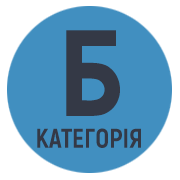THE INFLUENCE OF MENTAL NORMATIVITY AND ACCENTUATIONS OF CHARACTER OF SEAFARERS ON THEIR STRESS RESISTANCE DEPENDING ON THE FLIGHT DURATION AND AGE
DOI:
https://doi.org/10.51547/ppp.dp.ua/2022.3.22Keywords:
character accentuations, flight dynamics, sailors, age groups, personal profiles, personal resources.Abstract
The article notes that at the beginning of the flight by the method of accentuating the character of K. Leongard was found statistically significant differences on the scales "Demonstrativeness" and "Dysthymia", as well as the scale "Hypochondria" method "Mini-cartoon". In the dynamics of the flight, such differences have already been established on the scales "Hyperthymic", "Demonstrative", as well as "Hypochondria" and "Depression", respectively. According to the Mini-Mult Questionnaire, the representatives of the 1st and 3rd age groups differed statistically significantly in the manifestation of hypochondriac traits at the beginning of the voyage, and in the flight dynamics of sailors of all ages the personal profiles with leading peaks did not change. In the dynamics of the voyage of sailors of all ages, personal profiles with leading peaks have not changed. Statistically significant in the dynamics was a decrease in the level of rigidity and meticulousness in sailors of the 2nd age group. Representatives of the 3rd age group statistically significantly demonstrated the tendency to level the accentuations of character by hyperthymic and emotional variants. They were characterized by a decrease in the elevated background of mood, as well as the level of sensitivity and susceptibility from acute traits to normal. In addition to the basic personal resources involved in all phases of the long flight and after it (emotional stability, emotional comfort, courage, high self-control, internal control), each of them actualizes additional personal resources. Thus, at the beginning of the flight – these are qualities that indicate a realistic attitude to life (trust, practicality, relaxation, independence), during the flight – those aimed at constructive communication (camaraderie, intelligence, trust, truthfulness, avoidance of struggle). At the end of the flight, two sets of personal resources are distinguished, which provide true and false types of readaptation.
References
Безлуцька О.П. Психічна стійкість майбутніх моряків як основа готовності до роботи в екстремальних ситуаціях. Педагогіка формування творчої особистості у вищій і загальноосвітній школах. 2020. № 71. Т. 2. С. 43–46.
Зайцева Т.Г. Теорія і практика самоменеджменту психофізичних станів моряка з активізації людського ресурсу та подолання проблеми аварійності на флоті : монографія / Т.Г. Зайцева, В.Ф. Ходаковський ; за ред. Т.Г. Зайцевої. Херсон : ХДМА, 2012. 170 с.
Косенко К.А., Маркова М.В. Особливості психосоціального стресу й тривожно-депресивного реагування у представників командного і робітничого складу морського торгівельного і пасажирського флотів. Український вісник психоневрології. 2020. Том 28. Випуск 1(102). C. 54–59.



